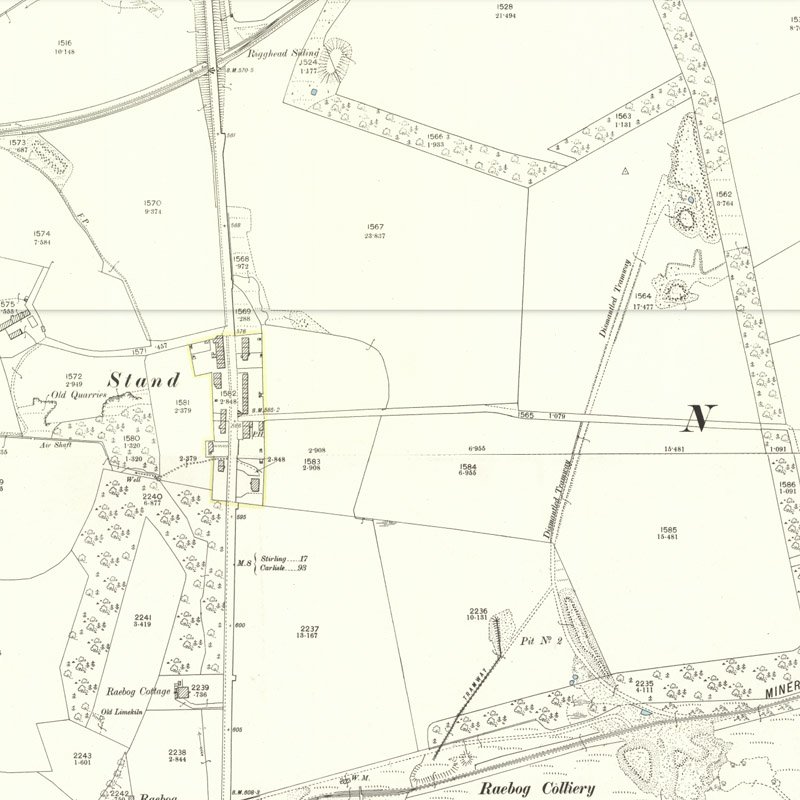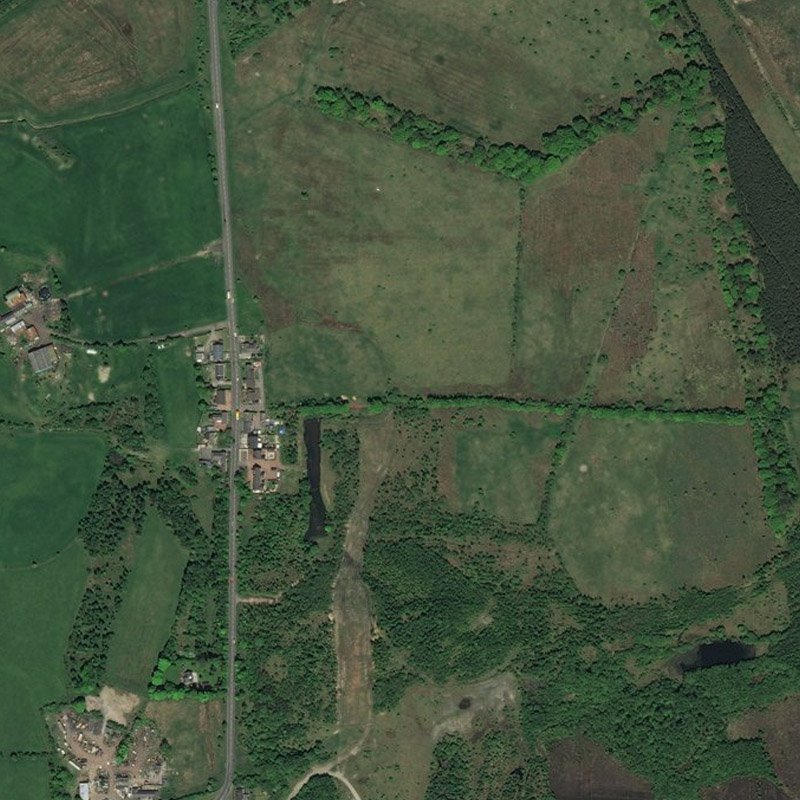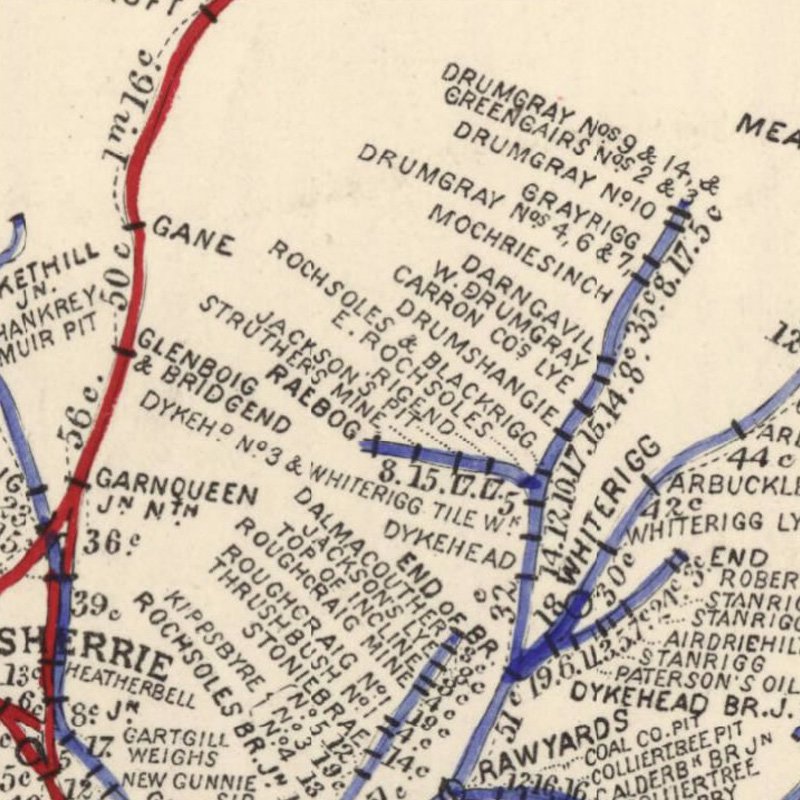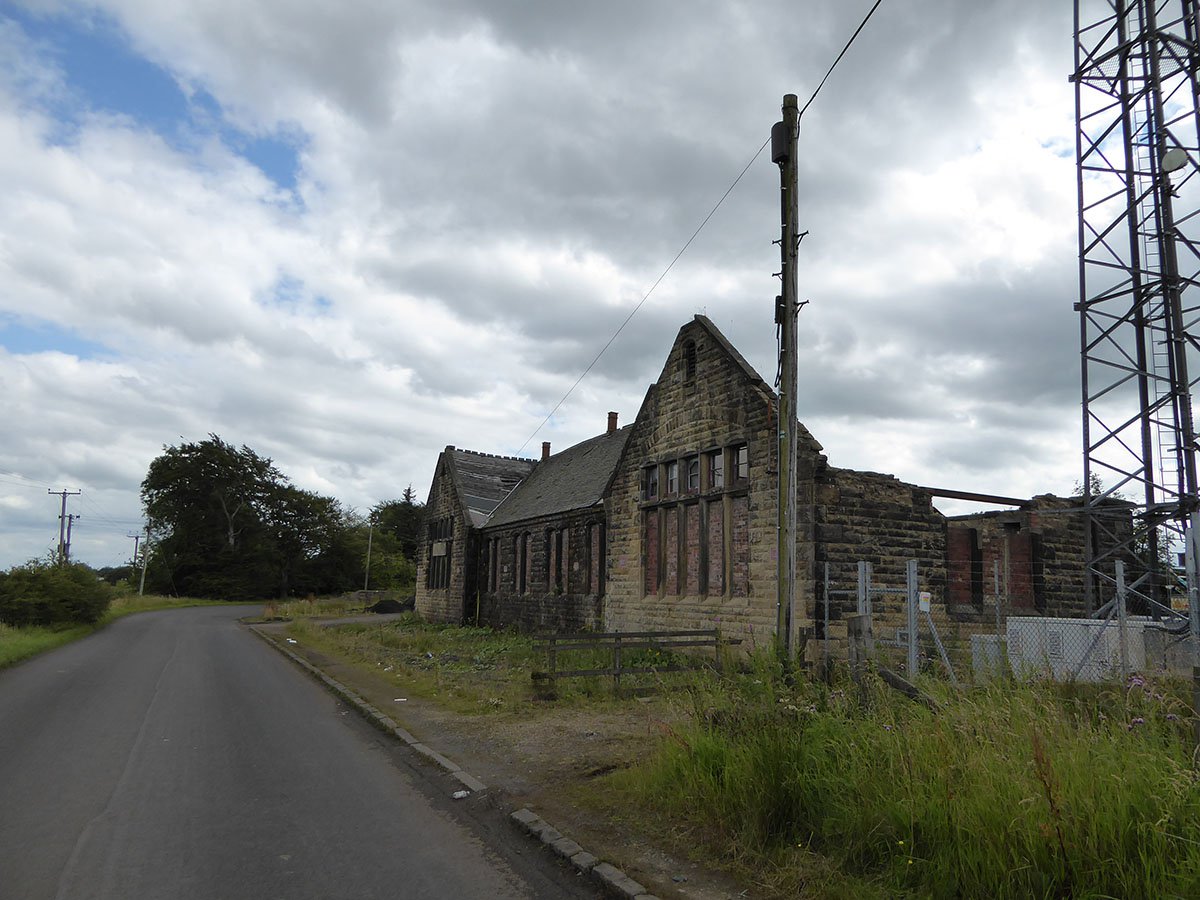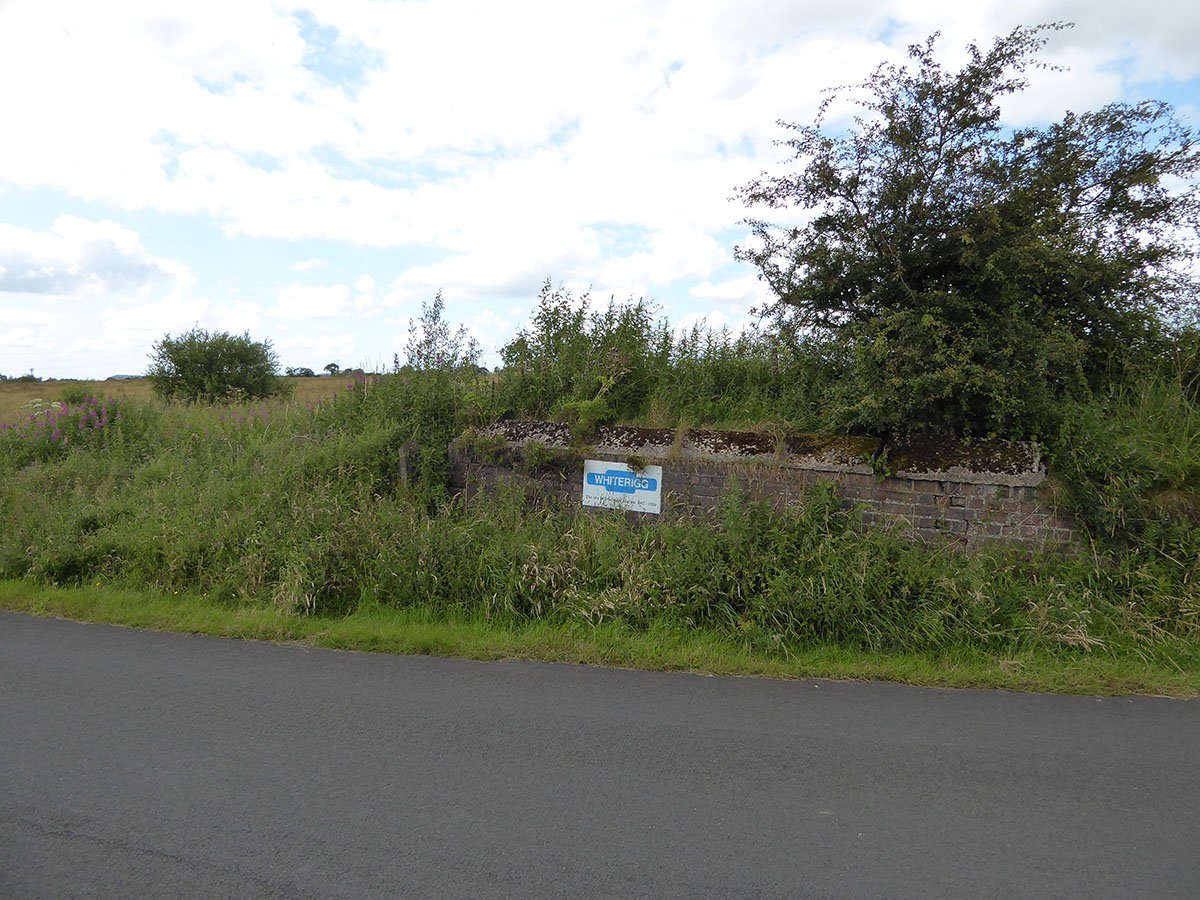- Aberdeen Oil Works
- Addiewell Oil Works
- Almondhill Oil Works
- Annick Lodge Oil Works
- Arden Oil Works
- Armadale Oil Works
- Auchenheath Oil Works
- Avonhead Oil Works
- Balgray Oil Works
- Ballat Oil Works
- Bathgate Oil Works
- Bathville Oil Works
- Bellsdyke Oil Works
- Bellsquarry Oil Works
- Benhar Oil Works
- Binnend Oil Works
- Birkenshaw Oil Works
- Bishop Street Oil Works
- Blackburn Oil Works
- Blackstone Oil Works
- Blackstoun Oil Works
- Blochairn Oil Works
- Boghall Oil Works
- Bredisholm Oil Works
- Breich Oil Works
- British Asphalte Oil Works
- Broxburn Oil Works
- Broxburn - Bell's Stewartfield Oil Works
- Broxburn - Albyn Oil Works
- Broxburn - East Mains Oil Works
- Broxburn - Greendykes Oil Works
- Broxburn - Hallfarm Oil Works
- Broxburn - Hutchinson's Oil Works
- Broxburn - Poynter's Oil Works
- Broxburn - Steele's Oil Works
- Broxburn - Steele's Stewartfield Oil Works
- Buckside Oil Works
- Burngrange Oil Works
- Calderbank Oil Works
- Canalbank Oil Works
- Champfleurie Oil Works
- Clippens Oil Works
- Cobbinshaw North Oil Works
- Cobbinshaw South Oil Works
- Coneypark Oil Works
- Craigie Oil Works
- Crown Point Oil Works
- Dalmeny Oil Works
- Deans Oil Works
- Doura Oil Works
- Drumbow Oil Works
- Drumcross Oil Works
- Drumgray Oil Works
- Dryflat Oil Works
- East Fulton Oil Works
- East Hermand Oil Works
- Eldin Oil Works
- Falkirk Oil Works
- Fergushill Oil Works
- Forthbank Oil Works
- Forth & Clyde Oil Works
- Gavieside Oil Works
- Grange Oil Works
- Grangepans Oil Works
- Greengairs Oil Works
- Hareshaw Oil Works
- Hartwood Oil Works
- Hawick Oil Works
- Hermand Oil Works (1866)
- Hermand Oil Works (1883)
- Holmes Oil Works
- Hopetoun Oil Works
- Hurlford Oil Works
- Inkerman Oil Works
- Inverkeithing Oil Works
- Kilrenny Oil Works
- Kilwinning Oil Works
- Kirkmuirhill Oil Works
- Kirkwood Oil Works
- Lanark Oil Works
- Lanemark Oil Works
- Levenseat Oil Works
- Limerigg Oil Works
- Linwood Oil Works
- Loanhead Oil Works
- Lochburn Road Oil Works
- Lochgelly Oil Works
- Longrigg Oil Works
- Magdalene Oil Works
- Methil Oil Works
- Millburn Oil Works
- Nettlehole Oil Works
- Niddry Castle Oil Works
- Nitshill Oil Works
- Oakbank Oil Works
- Palacecraig Oil Works
- Pathhead Oil Works
- Patterton Oil Works
- Pentland Oil Works
- Philpstoun Oil Works
- Port Dundas Oil Works
- Possil Oil Works
- Pumpherston Oil Works
- Raebog Oil Works
- Riggend Oil Works
- Rochsoles Oil Works
- Rochsolloch Oil Works
- Roman Camp - Almondfield Oil Works
- Roman Camp - Cawburn Oil Works
- Roman Camp Oil Works (1892)
- Roman Camp - Shale Oil Works
- Rosebank Oil Works
- Roughcraig Oil Works
- Rumford Street Oil Works
- Seafield Oil Works
- Shawsburn Oil Works
- Sheepford Locks Oil Works
- Shettleston Oil Works
- Shotts Oil Works
- Stand Oil Works
- Stanrigg Oil Works
- Stonehouse Oil Works
- Straiton Oil Works
- St. Rollox Works
- Swinehill Oil Works
- Tarbrax Oil Works
- Uphall Oil Works
- Uphall - Railway Oil Works
- Uphall - Wyllie's Oil Works
- Vulcan Chemical Works
- Wardend Oil Works
- Wattston Oil Works
- Westfield & Capeldrae Oil Works
- Westwood Oil Works (1941)
- Westwood Oil Works (1866)
- Whitebog Oil Works
- Whitehill Oil Works (Lanarkshire)
- Whitehill Oil Works (Midlothian)
- Whiterigg Oil Works
- Woodhall Oil Works
Stand Oil Works
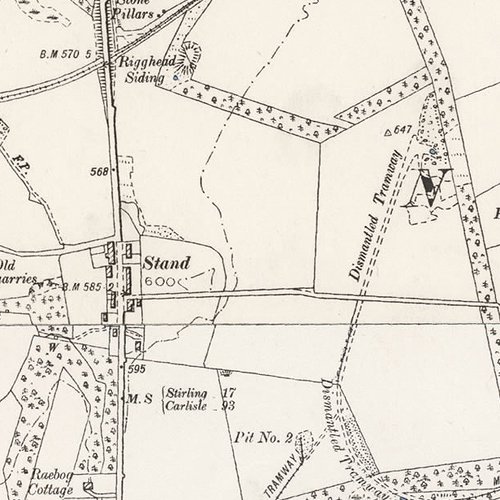
Not listed by Redwood, although mention is made of Struther's Works, active between 1864 and 1869.
Valuation rolls show that Stand Oil Works was operated by James Struthers & Co. Airey's railway map shows a siding to "Struther's Mine" eight chains east of Raebog. It might therefore be that the area of rough ground immediately east of Stand, shown on the 1899 map as being linked by a dismantled tramway might be the site of Stand Oil Works.
The firm of James Struthers & Co., coalmasters, were proprietors of Rochsoles Colliery.
James Struthers was a partner of the Monkland Oil Refining Co. Ltd, which was active between 1866 and 1870, and James Struthers & Co. acquired the plant and property of that company in 1870. It is possible that this refinery was sited close to Stand Oil Works.
Mapped by the Ordnance Survey of c.1899.
| Date | Rateable Value | Owner | Ocuupier | Notes |
|---|---|---|---|---|
| 1866 | £250 | Jame Struthers & Company | Jame Struthers & Company | |
| 1867 | £167 | Jame Struthers & Company | Jame Struthers & Company | |
| 1868-69 | £195 | Jame Struthers & Company | Jame Struthers & Company | |
| 1870 | £300 | Jame Struthers & Company | Jame Struthers & Company | |
| 1871-72 | £360 | Jame Struthers & Company | Jame Struthers & Company | |
| NO FURTHER ENTRIES |
Recent images
MINERALS TO LET. THE ESTATE OF ROCHSOLES, near AIRDRIE, With immediate entry, The SEAMS of COAL, including the Kiltongue, Drumgray, and Smithy Seams, also the Gas Coal and Shale, and the SEAMS and BANDS of IRONSTONE therewith connected, lying in and under parts and portions of the Estates of Dalmacoulter, Raebog, and Woodhead, extending to about 140 Acres. The various seams call be let separately, or the field divided into sections to suit Tenants; the Coal Seams have already been proved to be well suited for Household and Steam purposes. The Carlisle Turnpike Road intersects the Field, and the Rochsoles Branch Railway crosses the said Turnpike Road within a few hundred yards of the Field. Pits have already been put down through various of the Seams, the use of which will be given to tenants. The Slatey-Band Ironstone, under the whole Estate of Rochsoles, is also To Let. For further particulars apply John Rankin, writer, Airdrie; or Mr. Hume, Rochsoles, the later of whom will point our the boundaries, and with either of whom Offers may be lodged on or before 1st September next.
Scotsman, 24th August 1864
.......
SCOTCH GAS COALS.
The Rochsoles Gas Coal is a mineral nearly allied to the celebrated Boghead coal, and produces a rich return in gas. As this class of coal is becoming year by year more scarce, its value has been enhanced; and it is well known that the output of the best kinds has been contracted for while the seams last. On the other hand, several new pits have been opened, whose produce would have naturally come in to supply the deficiency; but these were conserved for oil distillation, and the output of the old works was as anxiously secured for the same purpose. Since that time oil distillation has nearly ceased, and the proprietors of various seams of gas coal are now freely offering their mineral for sale. By an analysis of some Scotch gas coals, Prof. Fyfe, of Aberdeen, supplies the following results: Boghead = 15,486 cubic feet per ton of coal; Arniston = 10,500 Lesmahagow = 10, 176. Mr Young, of Dalkeith Gasworks, subjected 26 cwts. of the Rochsoles coal to the test, and found that it yielded 11,902 cubic feet of gas to the ton of coal. This proves its superiority to both Arniston and Lesmahagow, and we believe the proprietors are willing to offer it on moderate terms. As the full analysis of this coal may prove satisfactory to our readers, we give it in detail. A commercial sample of Rochsoles gas coal, consisting of 26 cwts, was received here on the 20th ult. for analysis for gas, from Messrs James Struthers & Co., Rochsoles Colliery, Airdrie. The following deductions were made from working the entire sample, as in the ordinary practice in gas-making; 6000 cubic feet of the gas was stored for examination.
Glasgow Herald, 7th June 1867
.......
At Stand, near Airdrie, on 31st ult, the wife of Mr James Struthers; a daughter.
Glasgow Herald, 3rd January 1870
.......
While the thunderstorm was raging in the neighborhood of Airdrie on Sunday, the lightning struck a chimney-stalk at Stand Oil Works. The stalk, which was 75 feet in height, fell, smashing the roof of an engine-house and destroying a small pumping engine. Some of the bricks also fell on a large oil-tank, and destroyed it – about 900 gals, of oil running to waste.
Scotsman, 11th June 1872
.......
FOR SALE; Two cast-iron and two malleable iron stills with connections and condensers (capacity about 1400 gallons each) in good condition. Also a number of usefull tanks and other articles suitable for Oil Distillery. - Apply to James Stuthers & Co. Rochsoles Colliery, Stand, by Airdrie.
Glasgow Herald, 13th February 1873
.......
STILLS – Two Cast Iron and Two Malleable Stills, about 1500 Gallons each Capacity, for Sale. For particulars apply to James Struthers & Co., Rochsoles Colliery, by Airdrie.
Scotsman, 28th April 1873
.......
JAMES STRUTHERS & COMPANY, Paraffin Oil Manufacturers. Stand Airdrie, Lanarkshire. Our works are situated on an affluent of the Calder. Employ 20 hands. Rateable value of works, 170/. The bed of the stream is not silted up. Our works are not affected by floods. Obtain supply of water jointly from springs and from coal pits, but do not know the annual consumption at our works. Use yearly, bituminous shale, 6,000 tons ; sulphuric acid, 12 tons. Produce yearly, crude paraffin, 240,000 gallons; sulphate of ammonia, 30 tons. The whole of the liquid refuse produced flows into the stream. Produce yearly 4,000 tons of spent shale, which is deposited on the adjoining land. Use steam, 12 nominal horse-power. Consume yearly 4,000 tons of coal, and make about 400 tons of ashes, which are deposited on the shale heap. The excrements of our workpeople are deposited on the adjoining lands. Have no suggestions to offer.
From Report on the Pollution of Scotch Rivers to the Rivers Pollution Commissioners, 1873
.......
COAL WAGGONS.
About 50 for Hire- for further particulars, apply James Struthers & Co., Rochsoles Colliery, by Airdrie.
Glasgow Herald, 1st June 1875


